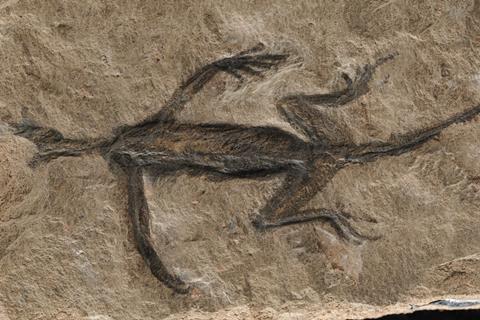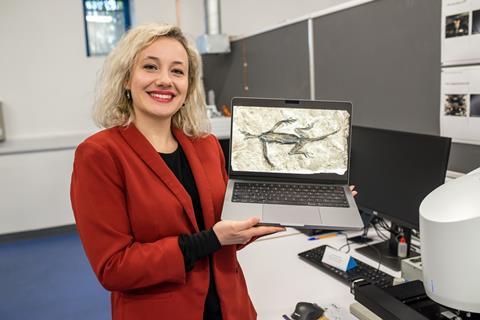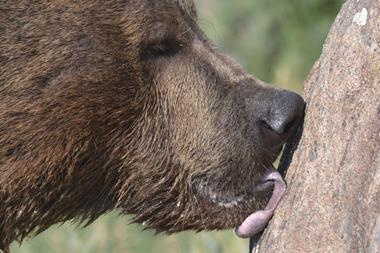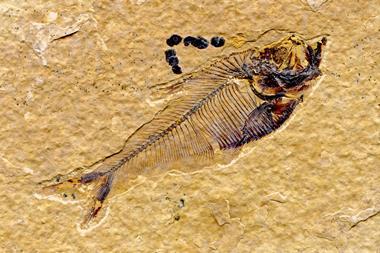A remarkable fossil reptile from the Alps in Italy has turned out to be a fake. What was thought to be soft tissue in the fossil is mostly just black paint daubed onto 280-million-year-old sandstone, an analysis has revealed.

The ‘fossil’ of an intriguing lizard-like creature with a slender body and long neck was discovered in 1931 and acquired by the University of Padua. There are some genuine poorly preserved hindlimbs on the sandstone, but the striking lizard-like outline was painted on by an unknown hand prior to the fossil being officially described in 1959.
‘This fossil is relatively famous in Italy,’ says Valentina Rossi, an Italian palaeobiologist at University College Cork, Ireland. ‘I knew it from books and articles.’ She was therefore excited when she got the opportunity to travel to Italy to examine the fossil of Tridentinosaurus antiquus at the Natural History Museum of Padua.
However, when she put the fossil under a microscope she became suspicious at the absence of any layers on the supposed reptile skin. Under a UV lamp, she found that the fossil outline glowed yellow, which would be typical of varnishes and pigments and was suggestive of a coating – not in itself unusual for a museum piece. She then took samples for further analysis.
Scanning electron microscopy revealed unusual small granules in the sample, and infrared and Raman spectroscopy then uncovered a molecular fingerprint that matched an inorganic pigment called bone black. ‘I went to an art shop here in Cork, bought one of those pigments and tested it. I got a very similar chemical signature,’ says Rossi.

Rossi and colleagues discovered that the samples taken from the fossil were made of apatite, a calcium phosphate mineral found in bones. Bone black, or animal black, is made using the dark powder left over from burnt livestock bones, mixed with oil or binder to produce a black pigment. ‘Those small fragments are from the extant animal bones and not the fossil,’ says Rossi.
‘Its importance is its age, being early Permian, and so at an early stage in the evolution of reptiles,’ notes vertebrate palaeontologist Mike Benton at the University of Bristol. ‘The authors don’t quite say the whole thing is a forgery, but it is uncertain whether there is anything there at all since even the “bones” within the painted body outline are indistinct and lack any distinguishing characters. As with Piltdown man [a notorious fake], there was a culprit, a person who set up the fraud – but there is little information on this topic.’
Though interesting and a neat bit of detective work, ‘this finding won’t shake the palaeo community’, says palaeontologist Susan Evans at University College London. With no meaningful skeletal parts, it should ‘never have been given a formal name’, she adds. ‘No major or even minor hypotheses rest on it – it just seems to have represented an interesting oddity by virtue of its early Permian age and apparent soft tissue remains.’
References
V Rossi et al, Palaeontology, 2024, DOI: 10.1111/pala.12690

















No comments yet